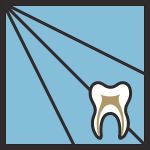What to Expect from a Dental Cleaning Appointment
- What is Dental Cleaning?
- The Dental Cleaning Process
- Benefits of Regular Dental Cleanings
- Common Misconceptions About Dental Cleanings
- How to Maintain Oral Health After a Cleaning
What is Dental Cleaning?
As someone who has gone through a number of dental cleanings over the years, I can tell you that dental cleanings are an essential part of maintaining good oral health. Also known as prophylaxis, a dental cleaning is a professional cleaning treatment conducted by a dentist or hygienist to remove plaque, tartar, and stains from your teeth.
This procedure helps prevent tooth decay, gum disease, and other dental problems. During a dental cleaning, the dentist will use specialized tools to clean the teeth and gums, which regular brushing and flossing can't reach. I’ve learned that scheduling these cleanings regularly can make a significant difference in oral health, helping me avoid more serious dental issues in the future.
The Dental Cleaning Process
The dental cleaning process can vary slightly depending on the office and the patient, but it generally follows the same steps. Here’s what I typically experience during my cleaning appointments:
1. Initial Examination
Before the actual cleaning starts, the dental hygienist will examine my mouth. This step is to check for any signs of dental problems, such as gum disease, cavities, or other issues that need attention. The hygienist might take X-rays if necessary to ensure everything is in good health.
2. Scaling
The next step in the process is scaling. This is where the hygienist uses a special tool to remove plaque and tartar from my teeth and gums. Plaque is a sticky film of bacteria that forms on teeth, and if it isn’t removed, it can harden into tartar, which can only be removed by a dental professional. I’ve noticed that scaling doesn’t hurt, though I sometimes experience a little sensitivity, especially around the gum line.
3. Polishing
Once the plaque and tartar are removed, the next step is polishing. The hygienist uses a gritty paste to polish my teeth, leaving them feeling smooth and clean. This step also helps remove surface stains and gives my teeth a shiny finish. I always leave my appointment with a bright smile!
4. Flossing
After polishing, the hygienist will floss between my teeth. This is important to remove any leftover plaque or debris that may be stuck between teeth, which brushing alone can't always get rid of. Flossing at the dental office ensures my gums are also in great shape.
5. Fluoride Treatment
Finally, many dental offices apply a fluoride treatment. Fluoride helps strengthen the enamel of my teeth and protects them from cavities. The fluoride treatment is applied as a gel or foam and typically stays on my teeth for a few minutes. It leaves my mouth feeling fresh and protected.
Benefits of Regular Dental Cleanings
Regular dental cleanings are important for several reasons. Over the years, I’ve learned that these appointments not only keep my teeth looking great but also help prevent many oral health problems. Here are the top benefits of getting a dental cleaning:
1. Prevents Cavities
By removing plaque and tartar, dental cleanings help prevent cavities from forming. Plaque harbors bacteria that can cause tooth decay, so regular cleanings significantly reduce the chances of cavities forming, keeping my teeth healthy.
2. Prevents Gum Disease
Gum disease, also known as gingivitis or periodontitis, is caused by bacteria that build up around the gums. If left untreated, it can lead to tooth loss. Regular cleanings help remove plaque and bacteria from the gums, preventing gum disease and keeping my gums healthy.
3. Fresher Breath
One of the most noticeable benefits I experience after a cleaning is fresher breath. By removing food particles, plaque, and tartar, dental cleanings help eliminate the bacteria that cause bad breath. This makes my mouth feel fresh and clean.
4. Detects Oral Health Issues Early
During my cleaning appointments, the dentist can spot issues like cavities, gum disease, or even early signs of oral cancer before they become more serious. Catching problems early saves time, money, and discomfort in the future.
Common Misconceptions About Dental Cleanings
Over the years, I’ve encountered several misconceptions about dental cleanings that I’d like to clear up:
1. Dental Cleanings Are Painful
Many people, including myself in the past, fear that dental cleanings are painful. In reality, most cleanings are relatively painless. I’ve noticed that I feel slight discomfort if my gums are sensitive, but it’s nothing compared to the pain of untreated cavities or gum disease.
2. You Don’t Need Cleanings If You Brush Regularly
While regular brushing and flossing are crucial, they can’t reach every part of my mouth. Professional dental cleanings remove the plaque and tartar that build up over time and can’t be removed with a toothbrush alone. Skipping cleanings can lead to dental issues that might require more intensive treatments later on.
3. Dental Cleanings Are Just for Cosmetic Reasons
Some people think that dental cleanings are only for cosmetic purposes, like getting a bright smile. While it’s true that cleaning improves the appearance of teeth, the primary goal is to prevent tooth decay, gum disease, and other oral health issues.
How to Maintain Oral Health After a Cleaning
After a dental cleaning, maintaining good oral hygiene is key to keeping my teeth healthy until my next visit. Here are a few tips that I follow to ensure my mouth stays fresh and clean:
1. Brush and Floss Regularly
Brushing twice a day and flossing once a day is the foundation of good oral health. I make sure to brush for at least two minutes each time and use a fluoride toothpaste to protect my teeth from cavities.
2. Avoid Sugary Foods
To keep my teeth in top shape, I limit sugary snacks and drinks that promote plaque build-up. I try to eat a balanced diet and drink plenty of water throughout the day to help keep my teeth clean.
3. Visit the Dentist Regularly
To maintain my oral health, I visit the dentist for a check-up and cleaning every six months. This regular schedule helps me stay ahead of any potential issues and ensures that my teeth are always in great condition.
If you're looking for professional dental care or advice on maintaining oral hygiene, I recommend visiting Dentistry Toothtruth for more information and services.







 Shawn O'Berry DDS5.0 (26 review)
Shawn O'Berry DDS5.0 (26 review) ForwardDental Madison East4.0 (165 review)
ForwardDental Madison East4.0 (165 review) Alameda Crossing Dental Group and Orthodontics4.0 (188 review)
Alameda Crossing Dental Group and Orthodontics4.0 (188 review) Westborough Family Dental5.0 (71 review)
Westborough Family Dental5.0 (71 review) Center One Dental Associates - Philadelphia Dentist4.0 (281 review)
Center One Dental Associates - Philadelphia Dentist4.0 (281 review) Central Pennsylvania Endodontics, LLC5.0 (241 review)
Central Pennsylvania Endodontics, LLC5.0 (241 review) The Importance of Oral Health Education During Pregnancy for a Healthy Pregnancy
The Importance of Oral Health Education During Pregnancy for a Healthy Pregnancy Best Tips for Brushing Your Teeth Properly for Healthy Gums: Essential Techniques for Oral Health
Best Tips for Brushing Your Teeth Properly for Healthy Gums: Essential Techniques for Oral Health Why Skipping Dental Checkups Can Lead to Bigger Oral Health Problems
Why Skipping Dental Checkups Can Lead to Bigger Oral Health Problems Advantages of Porcelain Dental Restorations
Advantages of Porcelain Dental Restorations How Can Diabetes Cause Tooth and Gum Problems? Preventing and Managing Oral Health Issues
How Can Diabetes Cause Tooth and Gum Problems? Preventing and Managing Oral Health Issues Healthy Habits for Promoting Good Oral Health and Hygiene: Tips for a Healthy Smile
Healthy Habits for Promoting Good Oral Health and Hygiene: Tips for a Healthy Smile